Exploring the Intricacies of America's Coins

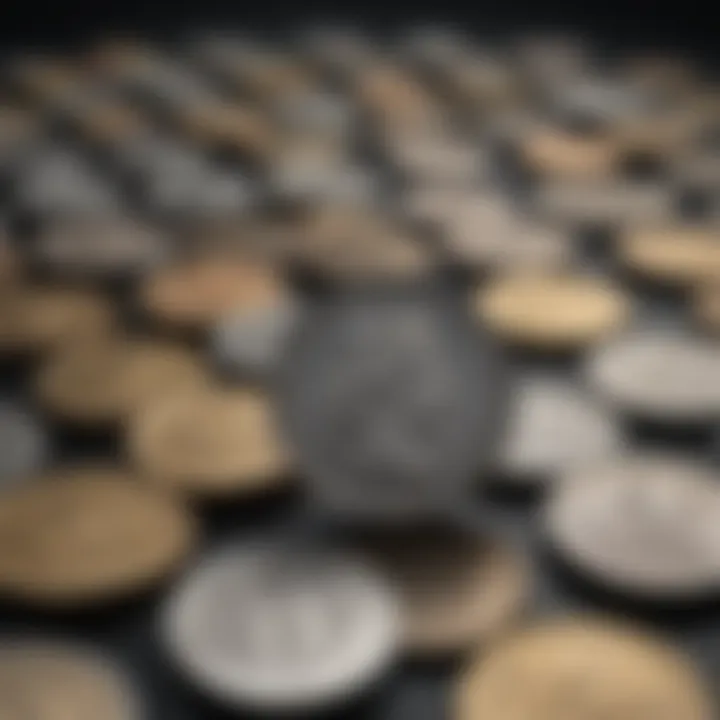
Intro
Coins have been a staple in american commerce for centuries, weaving a tapestry rich in history, art, and economics. These metallic pieces serve not just as currency but also as symbols of culture, making them fascinating subjects for avid collectors and casual observers alike. The story begins with simple barter systems and evolves through various eras, each leaving a unique stamp, both literally and figuratively, on the coins we handle today. Some might say that a coin is merely a means to trade, but here, we will explore the deeper narratives behind their designs, functions, and the role they play in our economy.
As we embark on this journey, it’s crucial to grasp the essential terms that help us navigate this intricate world. Understanding the vernacular used by collectors and investors lays the groundwork for a meaningful exploration of the subject. From distinctions between circulating and non-circulating coins to the various grading systems, knowing these terms will enrich your knowledge and appreciation of America’s coins.
Terminology and Definitions
The language of coin collecting can be as varied as the coins themselves. Here’s a breakdown of some key terms that can strengthen your grasp:
Key Investment Terms
- Mint State: Refers to coins that have never been put into circulation and retain their original quality.
- Numismatics: The study or collection of currency, including coins, tokens, paper money, and related objects.
- Bullion: Refers to precious metals in bulk form, primarily gold, silver, or platinum, valued for their metal content rather than face value.
- Annum: A term used when referring to the age of the coin or the time frame in which it was minted.
Glossary of Financial Concepts
- Inflation: The rate at which the general level of prices for goods and services rises, eroding purchasing power.
- Liquidity: The ease with which an asset can be converted into cash without affecting its market price.
- Portfolio: A grouping of financial assets like stocks, bonds, and coins, held by an individual or institution.
Understanding these terms will enhance your ability to participate in discussions about coin collecting and investing. Keeping them in mind as you explore the various denominations will illuminate the underlying value and historical significance of America’s coins.
Investment Strategies and Tips
When it comes to collecting or investing in coins, having a strategy is paramount. As with any investment, proper planning can ensure that you don’t end up with a handful of pennies instead of valuable treasures.
Expert Advice on Investment Approaches
- Diversification: Don’t put all your eggs in one basket. Try to acquire coins from different eras, metals, and denominations. This mitigates risks associated with market shifts.
- Educate Yourself: Knowledge is power. The more you learn about the history, rarity, and current market value of various coins, the better positioned you are to make informed purchases.
Risk Management Strategies
- Authenticity: Always verify the authenticity of rare coins. Counterfeits are a prevalent issue in coin collecting, and failing to do due diligence can lead to significant losses.
- Market Trends: Keep an eye on market trends. Being adaptable can prevent you from making poor investment decisions based on outdated information.
In summary, as you turn the pages of this exploration into America’s coins, grasping these terms and strategies will serve as a compass guiding your journey. This foundational knowledge not only frames your understanding but also empowers you as an investor and collector.
Historical Background of American Coins
The historical background of American coins provides essential context for understanding the evolution of currency in the United States. It lays the groundwork for not just the coins themselves, but also the economic systems they represent and the cultural values they reflect. Knowing the history behind these coins reveals how they contribute to our national identity, our financial practices, and even our artistic endeavors.
Colonial Era Coinage
During the colonial period, America relied heavily on foreign coinage. Since the colonies were still under British rule, they didn't have a standardized currency. Instead, colonists used Spanish pieces of eight, along with various British shillings and Dutch guilders. This patchwork approach reflects the eclectic nature of colonial economics, where trade and commerce flourished despite the absence of a formal currency system.
Interestingly, early American colonists also turned to barter systems in lieu of coins, with local goods used to settle debts instead of currency. This unique blend of practices created a colorful but chaotic financial landscape, foreshadowing challenges that would eventually lead to the establishment of a centralized minting authority.
Establishment of the U.S. Mint
The establishment of the U.S. Mint in 1792 marked a turning point in American monetary policy. It was born out of the need for a reliable currency that reflected the new nation’s values and sovereignty.
Founding principles
At the heart of the founding principles was the desire to create a consistent and trustworthy currency. The framers believed that a stable monetary system would help unify the nation and support economic growth. The decisions made then still resonate today, particularly in the way coins symbolize American ideals.
A notable characteristic of these principles was the commitment to integrity in coin production. The Mint was set up to prevent counterfeiting and ensure fairness in trade, a unique feature that reassured the public and built confidence in their currency. This foundational commitment was not merely symbolic but has real, practical advantages in a financial system that requires trust and stability.
First mint locations
The first mint locations established in Philadelphia were strategically chosen for their accessibility and security. These sites contributed to the goal of centralizing coin production, allowing for control over quality and design. Choosing Philadelphia, a bustling trade hub at the time, reflects both practicality and the spirit of collaboration that was vital in the nascent stages of American governance.
One distinct feature of these initial locations was their proximity to resources needed for minting, such as metal and skilled labor. This advantage not only accelerated production but also enabled the rapid development of a strong national currency. However, there were challenges as well; various locations led to some inconsistency in coin quality and value, a notable drawback at a time when the country needed stability.
Influence of Global Coinage
As America developed its own coinage, it was not operating in a vacuum. The influence of global coinage played a significant role in shaping American currency.
Spanish dollar
The Spanish dollar, or pieces of eight, was perhaps the most influential foreign currency in the Americas. Widely circulated, it provided a practical means for trade, laying the groundwork for dollar-based currency concepts. The Spanish dollar possessed an important characteristic: its intrinsic silver content made it valuable across various international trading then, ensuring broad acceptance. Its legacy continues today; in fact, the U.S. dollar draws its name from this historical coin.
However, one must note that reliance on the Spanish dollar created economic vulnerabilities, particularly during periods of fluctuating silver supply.
Trade tokens
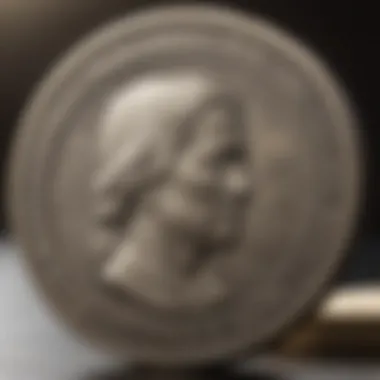
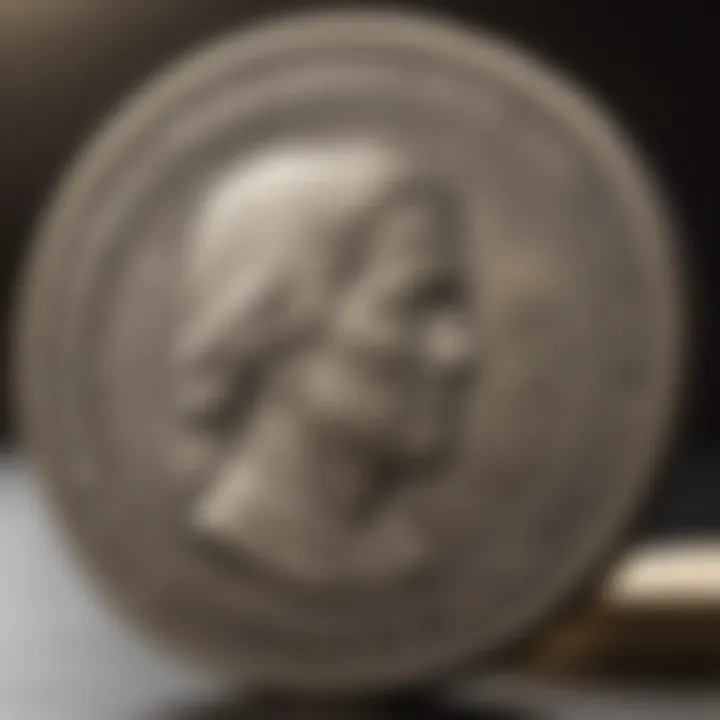
Trade tokens emerged as another interesting aspect of early American coinage. These were privately minted tokens often used by merchants in place of currency, thus demonstrating local economies' adaptability. Each token represented a specific store, offering a unique aspect to trade in local contexts.
A key characteristic of trade tokens is their personalization; they serve as a tangible connection between consumers and local businesses. However, since they varied widely in terms of weight and material, they presented challenges regarding standardization and trust.
In summary, the historical backdrop surrounding American coins is rich and layered. From the colonial era's reliance on varied foreign currencies to the establishment of the U.S. Mint and global influences like the Spanish dollar and trade tokens, each element contributes to a deeper understanding of America’s monetary evolution. Recognizing these factors is crucial for any financial enthusiast looking to appreciate the intricate world of coins.
Major Coin Denominations
Understanding the major coin denominations of America offers a window into both the practical and cultural aspects of currency. Each denomination not only plays a role in everyday transactions but also reflects the values, history, and artistry of the nation. The significance of these coins lies in their design evolutions, historical importance, and the way they represent societal changes over time. For many, these coins symbolize trust in the economic system, while for collectors, they are treasures that encapsulate stories and evolutions. Exploring each denomination allows us to appreciate America’s fiscal history while also considering its current trajectory.
Penny: The One Cent Coin
Design changes
The design changes of the penny over the years tell a story of innovation and adaptation. Originally minted with a depiction of Lady Liberty, the design has seen significant transformations, most notably the introduction of the Lincoln penny in 1909, celebrating the centennial of Lincoln's birth. The design changes contribute to the overall topic by showing how national sentiment can direct the imagery used in coinage. One key characteristic of design changes on the penny is its ability to resonate with cultural values; it reflects who we are as a nation at various points in time. Furthermore, these changes have also sparked discussions about what icons represent American ideals most effectively.
Designing coins impacts collectibility as well; coins that feature notable design changes tend to be more sought after by numismatists. A unique feature of the penny's design evolution is the introduction of the reverse image of the Lincoln Memorial in 1959, which has become iconic. Yet, there are disadvantages, too, like the controversy surrounding the costs of maintaining a penny in circulation versus its value.
Cultural significance
The cultural significance of the penny goes far beyond its monetary value, as it is often seen as a symbol of good luck—"Find a penny, pick it up, all day long, you'll have good luck". This saying underscores a cultural attitude towards the penny that highlights its perceived worth in everyday life. One important aspect of the penny's cultural significance is its connection to social practices; it’s typically not uncommon for individuals to jar pennies over years as part of building savings.
Moreover, this denomination has become a nostalgic artifact in American history, representing simpler times in economic transactions. Although some advocate for its elimination due to costs of production, the penny still holds sentimental value for many, reminding them of their youth and times spent with family. Its challenges also raise questions about how future generations will perceive currency.
Nickel: The Five Cent Coin
Historical variations
Historical variations of the nickel highlight shifts in American values and priorities while showcasing artistic expression through its design. Originally introduced as the Shield nickel in 1866, the coin has undergone various transformations, prominently featuring images of historical figures like Thomas Jefferson and motifs from American life. The evolution of the nickel illustrates how historical events and advancements shape the coin's design.
Each design variation can serve as a distinct historical marker. The introduction of the buffalo nickel in 1913 and the Jefferson nickel in 1938 are notable examples, revealing a willingness to celebrate American identity through coinage. These changes are beneficial as they provide insight into the socio-economic environment of their respective eras, while also creating a diverse collector’s market, as certain variations become highly coveted.
Current design
The current design of the nickel, featuring Thomas Jefferson on the obverse and Monticello on the reverse, represents American pride and the values of freedom and democracy. This design reflects a blend of tradition and appreciation for history. While some may consider this design a choice that resonates with the past, it has become somewhat static, with limited updates, signaling the potential for stagnation in currency design.
A key characteristic of the nickel's current design is its balance between familiarity and simplicity, facilitating its acceptance in everyday transactions. However, there are disadvantages, such as a lack of incentive for new designs, leading to diminished public engagement and interest. The relative consistency of the nickel contrasts sharply with the dynamic nature of other denominations, marking a fork in the path of numismatic evolution.
Dime: The Ten Cent Coin
Evolution of design
The evolution of design for the dime reflects a fusion of artistic flair and cultural milestones. Initially minted with the depiction of Liberty seated, the dime has transformed into the modern version featuring Franklin D. Roosevelt. These design changes signify not only artistic transitions but also shifting national priorities. The dime’s size and style echo historical economic frameworks, showing how perceptions of value have evolved.
A unique feature of the dime’s design is how it pays homage to Roosevelt’s commitment to the March of Dimes, showcasing not just its monetary worth, but its place in public consciousness during a significant time in American history. While its design evolution has been largely praised, some critics argue it is still too closely tied to the past and fails to resonate with contemporary issues.
Collectibility aspects
The collectibility of dimes offers a glimpse into the intersection of economics and hobby. Dimes, particularly key dates like the 1894-S Barber Dime, have fetched astronomical prices at auctions, underscoring the potential for coins to serve as investment assets. The popularity of specific types, such as mercury or silver dimes, speaks to collectors’ interests in the aesthetic and historical context of coinage.
A notable characteristic of dimes is their affordability, making it easier for novice collectors to enter the numismatic world. However, with this accessibility comes the challenge of counterfeit coins and the necessity for astute evaluation skills among collectors. Collectibility of dimes, thus, highlights both opportunities and pitfalls for enthusiasts navigating the complex market.
Quarter: The Twenty-Five Cent Coin
State quarters program
The State Quarters Program, launched in 1999, represents a brilliant initiative to involve the public in numismatics while celebrating local heritage. With each state being honored with a unique quarter design reflecting its identity, this program spurred excitement for coin collecting among the masses. It shows how coins can serve as a unifying force, connecting citizens with their states and fostering a sense of pride.
One key aspect of this program is that it has effectively engaged a diverse audience—from children to seasoned collectors. The widespread popularity of state quarters has led to a rise in interest and appreciation for coinage, making it a beneficial choice for fostering national unity through the love of collectible coins. However, as with any program, there are critics that argue the sheer number of designs may dilute the perceived value of quarters.
National Park quarters
The National Park Quarters program, which followed shortly after the State quarters initiative, aims to honor America’s natural treasures. Each quarter features a unique design representing a different national park, educating the public about these invaluable sites while further igniting interest in coins. This series means historical significance as it connects the concept of currency with environmental awareness and conservation efforts.
A distinct feature of the National Park quarters is their ability to resonate with both tourists and collectors alike, creating a bridge between natural artistry and financial value. However, given their somewhat predictable nature of design, some collectors may find a lack of novelty. Over time, as these quarters become detached from their contextual significance, there could be potential drawbacks regarding their collectibility.
Half Dollar and Dollar Coins
Rare commemorative issues
The realm of half dollar and dollar coins is rich with rare commemorative issues that reflect pivotal moments or figures in American history. These coins often become highly sought after in the numismatic community. The introduction of the Kennedy half dollar following JFK’s assassination represents a poignant moment in contemporary America, and it showcases how commemorative coins engage with the present.


The rarity of certain issues lends them a unique mystique, serving as both a collector's item and a historical artifact. A unique aspect of rare commemorative issues is their ability to appreciate significantly in value over time, sometimes providing lucrative opportunities for investors. On the downside, it’s essential for collectors to perform due diligence, as the market for rare coins can be filled with counterfeit coins and misinformation that could lead to financial losses.
Public reception
The public reception of half dollar and dollar coins has been mixed over the years, with the half dollar especially being seen as something of an anachronism in contemporary commerce. While some collectors hold them in high regard due to their historical craftsmanship, the general public often views them as impractical for everyday use. This dichotomy showcases a pivotal issue within coinage—the balance between aesthetic appreciation and practical functionality.
Interestingly, dollar coins, including the Sacagawea dollar, have had fluctuating popularity. Despite their rich historical narratives, the difficulty in circulating them has relegated them to little more than novelty items for many consumers. This highlights a crucial characteristic regarding public perception: more often than not, the designs and historical context backing these coins are not translated into their commercial viability. This can present challenges for coin enthusiasts and investors alike in understanding true value.
Ultimately, these major denominations paint an expansive portrait of America itself. Amid evolving designs, collectibility, and public perceptions, they offer rich narratives that connect us to diverse aspects of American life.
Coin Production Processes
Understanding the processes involved in coin production is fundamental for grasping the full picture of American coinage. These processes not only define the physical form of the coins but also influence their cultural significance and market value. The production journey from design to minting is where art meets science, ensuring that every coin serves its purpose as a form of currency while reflecting national values and history.
Design and Engraving Techniques
Role of engravers
Engravers play a crucial role in turning abstract ideas into tangible coin designs. Their skill involves both artistry and technical precision, as they're responsible for carving every detail of a coin's imagery. This facet is critical in ensuring that the symbols embedded reflect the values of the United States. For instance, famed engraver Augustus Saint-Gaudens’s work on the double eagle coin is a testament to how an engraver can influence not just the coin’s design but its place in American history. The meticulous nature of engraving allows for a variety of textures and depths, which adds to a coin's overall aesthetic. However, one downside of traditional engraving is the time and labor it demands, which can increase production costs.
Modern design practices
Modern design practices in coin production have moved towards digital technologies, vastly improving efficiency and precision. CAD software allows designers to experiment with complex designs rapidly and make real-time adjustments. This evolution enhances the visual appeal of coins while cutting down on costly errors. A significant feature of modern practices is the ability to create fresh designs faster, engaging a younger audience by introducing contemporary themes. Yet, this reliance on technology can sometimes lead to a sterile aesthetic, lacking the personal touch that traditional methods imbue.
Minting Methods
Manual vs. automated minting
The distinction between manual and automated minting processes greatly impacts production timelines and overall coin quality. Manual minting, once the norm, allowed for a hands-on approach where craftsmanship was paramount. It does create coins that often have unique characteristics, which collectors greatly appreciate. On the flip side, this method is time-consuming and not feasible for large-scale production. Automated minting has revolutionized the industry by dramatically increasing output; however, it can produce less variation, leading to coins that may feel less special compared to those produced by hand.
Quality control measures
Quality control measures are essential to maintain trust in monetary systems and ensure that coins meet required standards. This process involves rigorous testing of every batch produced to check for flaws or discrepancies in design and composition. The introduction of high-tech inspection equipment has streamlined this process, allowing for thorough evaluation without significant delays. Ultimately, quality control helps avoid errors—like misprints—that could undermine the value of a coin. Still, the challenge lies in balancing efficiency with the traditional craftsman's eye for detail, which can sometimes be overlooked in fast-paced production environments.
Material Composition of Coins
Historical metal use
Historically, the metals used for creating American coins reveal a lot about the economic context of their times. Early coins often relied on precious metals such as silver and gold, which added inherent value. The use of these metals not only provided coins with a unique aesthetic but also bolstered public trust in the currency's worth. However, as market dynamics shifted, reliance on these metals made coins vulnerable to fluctuations in value, prompting a gradual transition in materials utilized. Today, using less expensive metals creates accessibility but can impact perceived value among collectors.
Contemporary alloys
Present-day coins are typically made from a mix of alloys that offer durability and cost-effectiveness without sacrificing aesthetic charm. For instance, the current penny comprises primarily zinc, clad in a thin layer of copper. This balance allows for significant cost savings while ensuring coins remain functional for everyday transactions. A challenge with modern alloys is that they must resist wear and tear while remaining affordable. This quest for the right formula continues to evolve alongside changing economic and public needs.
Economic Impact of American Coins
The economic significance of American coins weaves a complex narrative that extends far beyond mere currency exchange. This section delves into the role that coins play within this nation's monetary system and their influence on overall economic stability and growth. Understanding these dynamics offers insight into how coins are not just pieces of metal, but vital instruments of commerce and investment.
Role of Coins in Monetary Policy
Coin circulation
Coin circulation refers to how these denominations are distributed and used throughout the economy. A healthy flow of coins facilitates day-to-day transactions and encourages commerce at local businesses. For instance, when individuals have easy access to coins, small purchases become feasible without the need for credit or digital payments. This physical exchange allows for a distinct and immediate impact on consumer behavior.
One interesting aspect of coin circulation is its role during economic downturns. People tend to hold on to cash during these times, leading to tighter coin circulation. Coin usage can thus be a barometer for economic confidence—when coins become scarce in circulation, it often reflects broader economic concerns.
The unique feature here is how coins serve both as a symbol of stability and a practical tool in financial transactions. While the benefits are clear, the disadvantages include the costs associated with minting and distributing these coins. Keeping a healthy balance of coins can be tricky for national monetary policies, especially in regions where digital transactions are gaining ground.
Inflation considerations
Inflation plays a fundamental role in the value of coins over time. The purchasing power of these coins can shift significantly due to economic policies and market conditions. Inflation considerations aren’t just a concern for larger bills; even quarters and dimes are not immune to the growing cost of goods within the economy. When inflation rises, the real value of coins decreases, affecting how consumers perceive and utilize their purchasing power.
One key characteristic of inflation is its tendency to erode savings. For many, coins may seem trivial, but they can accumulate into a significant store of wealth. Understanding the relationship between inflation and coinage is crucial to grasping monetary policies in the broader economic context. A promising angle to consider is how certain coins tend to withstand inflation better than others, providing insights for collectors and investors alike.
The challenge therefore lies in recognizing how coins can operate under varying inflation rates. While they serve everyday needs, their ability to act as investment assets also evolves with these economic shifts.
Coins as Investment Assets
Investing in coins has become a favored strategy among enthusiasts and collectors. The unique features of coinage offer various advantages, akin to tangible assets or collectibles. Observing market trends and shifts in coin values makes it crucial for anyone looking to engage in this aspect of the economy.
Market trends
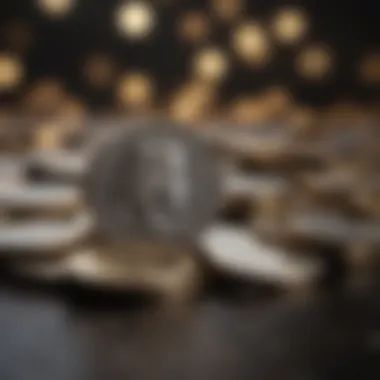
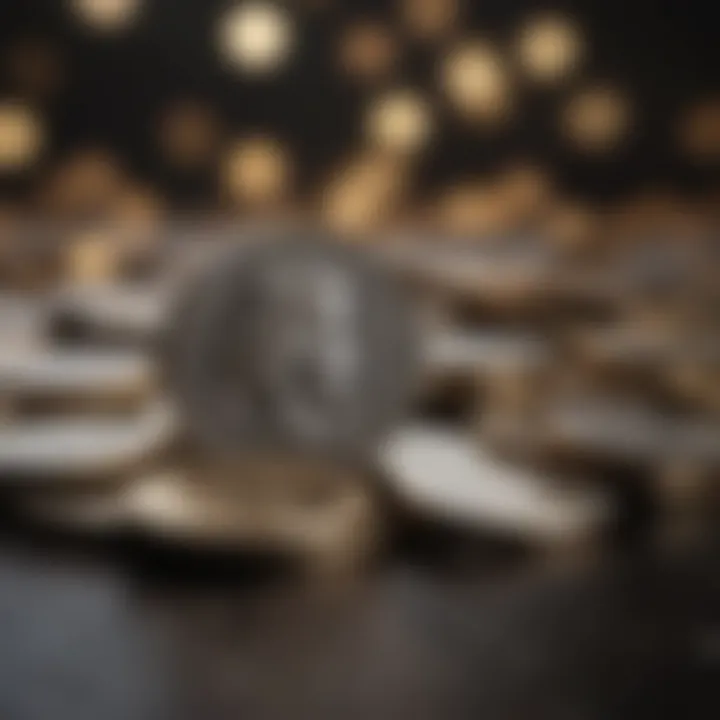
Market trends in coin investing highlight the fluctuations in value driven by demand, rarity, and condition. Collectors keen on acquiring specific coins often find themselves navigating competitions that can drive prices up significantly. This adds a layer of excitement to the practice, as individuals can find rare pieces and potentially reap considerable rewards.
The beneficial characteristic of recognizing these market trends is how they front investors visual opportunities. By studying past sales, auctions, and altering demand cycles, potential buyers can strategically decide when to purchase certain coins. Notably, coins like the 1933 Saint-Gaudens Double Eagle remain iconic for their value and story, making them collectors' targets.
However, investors must tread carefully. The market can swing unexpectedly, influenced by factors ranging from economic conditions to changes in ownership trends.
Factors affecting value
Numerous factors influence the values assigned to coins. Rarity is paramount—a coin’s worth may skyrocket if it’s part of a limited mint run or tied to a significant historical event, like the Apollo 11 coin series. On top of rarity, condition also weighs heavily on value. For collectors, terms like Mint State or Uncirculated denote a pristine state, thereby enhancing desirability.
Additionally, a coin's provenance—where it has been and whose hands it has passed through—can bolster both value and appeal. Unlike other investment assets, understanding the rich stories behind coins can add profound meaning.
On the flip side, there are risks associated with coin investments, particularly in a fluctuating market. Buyers may find it difficult to offload certain coins that they thought were valuable, or market interest may simply not exist for specific denominations after a period.
Investing in coins requires a delicate balance between knowledge, timing, and passion.
In summary, exploring the economic impact of American coins unravels their central roles in monetary policy and as investment vehicles. From the circulation patterns reflective of everyday life to the intricacies of market trends and value fluctuations, coins remain a fascinating aspect of the American economy.
Cultural and Societal Perspectives
Examining the cultural and societal perspectives associated with American coins reveals much more than just their monetary value. Coins are, in many ways, physical artifacts that reflect the values, identity, and history of a nation. By understanding their symbolism and popularity in coin collecting, we can gain insights into the priorities and aspirations of society at large.
Symbolism in Coin Design
National icons
National icons featured on coins serve as powerful symbols of identity and unity. These icons—whether they are depictions of liberty, influential leaders, or significant events—carry a weight of meaning that goes beyond the coin's face value. The presence of these icons serves to foster a sense of national pride. One significant example is the depiction of the American bald eagle, which is often seen as a representation of freedom and strength. It's not merely a popular design choice; it becomes a rallying point for citizens, embodying the core values of the nation.
A unique feature of these national icons is how their representation can evolve with the times. As cultural values shift, the imagery on currency can reflect those changes, making it a living history. However, this raises questions about how relevant these designs remain to future generations. Change can be beneficial, ensuring coins are perceived as relatable, but it can also lead to controversies regarding historical representation.
Cultural reflections
Cultural reflections in coinage present another fascinating angle. Coins often depict elements that encapsulate local traditions, stories, and achievements. For instance, state quarters showcase landmarks, famous figures, and historical events tied to individual states. This not only generates interest among collectors but also creates a collective memory among citizens. The diversity of these reflections showcases the myriad of voices and experiences within the United States.
The challenge here lies in the balance: while it’s advantageous for coins to feature widely recognized cultural symbols, there’s also the risk of oversimplifying complex narratives. Some argue that reducing cultural heritage to simple designs can undermine deeper historical understandings. Yet, it opens the door to broader conversations about representation and inclusivity, making room for various cultural expressions.
Coin Collecting as a Hobby
Coin collecting, or numismatics, is a hobby that transcends age, background, and even economics. It's not just about the thrill of the chase; it involves a deep appreciation for history, artistry, and sometimes, investment potential. The world of numismatics offers enthusiasts the chance to connect with the past in tangible ways.
Preface to numismatics
Numismatics provides a substantial gateway into the exploration of history and economics. Through coin collecting, each piece tells a story about its time, technology, and the culture it emerged from. This aspect is one of the key characteristics that makes numismatics appealing; collectors are not merely acquiring pieces of metal, they are gathering pieces of art and history. For novices, this hobby can offer educational opportunities, such as learning about minting processes, historical events, and geographical significance.
Moreover, developing knowledge about valuing coins and understanding market trends can enhance a collector's experience. However, it’s also worth noting that novices might feel intimidated by the vast information available, and this could discourage them from entering the hobby.
Collecting strategies
Implementing effective collecting strategies can greatly enhance one's experience and success in numismatics. Collectors often focus on specific themes, such as state quarters, historical figures, or particular time periods. This targeted approach allows for a more in-depth understanding and a cohesive collection that can tell a more comprehensive story.
The strategic angle is beneficial because it provides direction and purpose. However, collectors must also be mindful of market trends and the potential for over-investing in specific pieces that might not appreciate over time. The fine line between collecting for passion versus profit can sometimes blur, and collectors need to maintain clarity about their motivations.
Current Trends in Coinage
As we peer into the realm of modern finance, the relevance of coinage hasn't dwindled. Instead, it has crossed paths with emerging trends that redefine how we think about currency. In this section, we’ll analyze two pivotal trends: the simultaneous rise of digital currency and the fate of physical coins. These elements not only shape our current landscape but also offer fascinating insights into the future of money and commerce.
Digital Currency vs. Physical Coins
Impact of cryptocurrencies
Cryptocurrencies have radically transformed our understanding of exchange mediums. One might ponder, what is it about this digital currency that attracts so many? Well, at the heart of its allure lies the promise of decentralization. Unlike traditional fiat currencies, cryptocurrencies operate on a network of thousands of computers, ensuring that no single entity—like a government or a bank—can hijack or manipulate the system. This forms a layer of security and trust that many find appealing.
Moreover, the convenience factor cannot be overstated. Individuals can transfer Bitcoin or Ethereum across borders with minimal fees and almost instantaneous speed. This is a far cry from the delays and red tape commonly associated with bank transactions, especially internationally.
Yet, it's not all sunshine and rainbows. The volatility associated with these currencies often makes them a wild card in investment portfolios. Price swings can reach dizzying heights—or depths—within hours. Those itching to jump on the cryptocurrency bandwagon should tread carefully and guard against speculative pitfalls.
Future of physical coinage
Conversely, what’s the prognosis for traditional coins? Are they destined for the history books, or do they still hold a flicker of hope? The truth is, while digital currencies gain traction, the physical coin is clinging tenaciously to life. Many daily transactions, especially in local markets or among less tech-savvy populations, still predominantly involve cash.
Furthermore, the tactile and familiar nature of coins provides a comfort that digital currencies lack. For many, the act of using coins builds a tangible connection to value. The unique feature of physical coinage is its permanence in the collective memory and identity of a nation, particularly in cultures where cash is still king.
However, the drawbacks are clear: the rising costs of minting and supplying physical currencies, combined with the push for a cashless society, raises doubts about their long-term viability. As payment applications gain widespread adoption, physical coins may find themselves sidelined, relegated to the status of collector’s items or nostalgic tokens of economic history.
"While the future is murky for physical coins, their historical significance remains cast in stone, serving as artifacts of monetary evolution."
In summary, the dance between digital currencies and physical coins indicates a broader evolution of money itself. For those delving into the world of numismatics or considering investments, understanding these trends offers crucial insights into not only the current market but also where it may be heading next. Being informed helps advisors and individuals alike make wise decisions, whether they opt for avant-garde cryptocurrencies or the reliable charm of coins.







